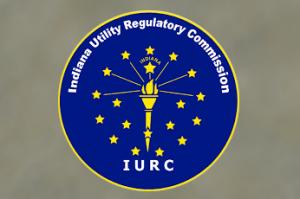Indiana Court Upholds Increase Granted NIPSCO in 2016

Once again finding that an advocacy group's appeal of a 2016 Indiana Utility Regulatory Commission rate order was an attempt at transforming the commission into a policy-making body, the Court of Appeals of Indiana has denied the appeal and upheld the commission's decision in full. The appeal, filed by the Citizens Action Coalition of Indiana (CAC), had revolved around an electric utility rate proceeding in which the utility, Northern Indiana Public Service Company (NIPSCO), had been awarded an increase of $72.5 million.
Although the additional revenues authorized had been the product of a settlement, were substantially lower than the $126.5 million requested by the company, and represented just the second base rate increase allowed NIPSCO in the last 25 years, CAC had protested the commission's findings, alleging that the commission had failed to provide detailed reasons for its acceptance of the proposedstipulation. The consumer group took particular exception to the commission's endorsement of the new schedule of monthly customer charges set forth in the rate agreement.
The appellant conceded that raising the residential charge from $11 a month to $14 per month, as reflected in the settlement, was an improvement over the company's initial recommendation of a $20 residential charge, which would have constituted an increase of more than 80%. Nevertheless, CAC argued that the commission had not explained why it was reasonable or appropriate for increases in a company's fixed costs to be recovered solely through its fixed charges.
Moreover, CAC claimed that neither NIPSCO nor the commission had shown why adding to the customer charge was preferable to some other alternative rate redesign. According to CAC, the higher customer charges not only would be counterproductive when it comes to encouraging conservation and energy efficiency, but also would have a disproportionate impact on the elderly, African-Americans, low-income customers, and residents of various disadvantaged communities. The advocacy group contended that those were all factors that the commission had not adequately considered.
In prosecuting its appeal, CAC objected that it had presented more compelling evidence than had NIPSCO when it came to the issue of the proper level of customer charges. CAC also complained that it had been shut out of the settlement process as to low-income assistance plans. Indeed, CAC pointed out that after other parties challenged the low-income program first suggested by the utility, NIPSCO withdrew its proposal in its entirety and no other party pushed to add such terms to the ultimate stipulation. As a result, CAC told the court that the commission had signed off on a stipulation that inexplicably excluded all low-income assistance measures, even though NIPSCO's original rate application had included such.
In addressing CAC's arguments, the court echoed the reasoning it had enumerated in a similar rate case appeal decided only two weeks earlier. In that proceeding, centered on Indianapolis Power & Light Company (IPL), the court had reminded CAC that state law gives the commission broad discretion in assessing rate proposals and weighing the evidencethereto before arriving at a level of rates it deems just and reasonable.
According to the court, the appeal in the NIPSCO case closely tracked the same issues that CAC had raised in its IPL appeal, leading the court to a similar outcome in dismissing the appeal. That is, the court stressed to CAC that regardless of the evidence it had offered, as long as the record was sufficient to justify the commission's findings, its decision would be sustained. The court reiterated that it is not enough for a group to show that the evidence also could have been interpreted in a different manner to support an alternative position.
As to CAC's contentions about looking at the effect of new rate schedules on certain individuals, the court related that there was nothing in state law requiring the commission to specifically consider the impact of new rate designs on certain distinct customer subgroups. In fact, the court noted, Indiana's regulatory construct requires only that the commission assure the justness and reasonableness of rates and rate design for customers as a whole (emphasis added by the court).
The court posited that it would be up to the state legislature to amend current state law to require the commission to address such socioeconomic- specific questions within the context of a rate case. Moreover, responding to CAC claims that the commission had ignored those statutory clauses encouraging conservation activities and rate reduction strategies, the court pointed out that encouragement is not the same as a mandate.
In the end, the court admitted that the final rates memorialized in the NIPSCO settlement may not have been "ideal." However, it said, that did not mean they were unreasonable per se.
The court concluded that while it was clear that the final rate agreement was deficient in certain ways, especially with regard to low-income assistance, there nevertheless was a firm record basis for the commission to have embraced it. The court stated that the commission's ultimate order provided for a revised schedule of rates that was reasonable and appropriate overall. Citizens Action Coalition of Indiana, Inc. v. Northern Indiana Public Service Co. et al., Court of Appeals Case No. 93A02-1608-EX- 1854, Apr. 19, 2017 (Ind.Ct.App.).



